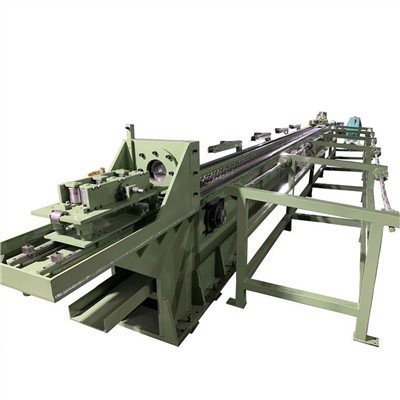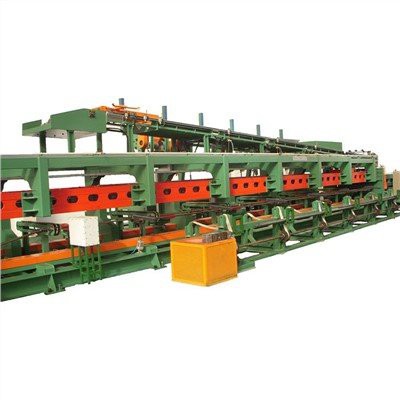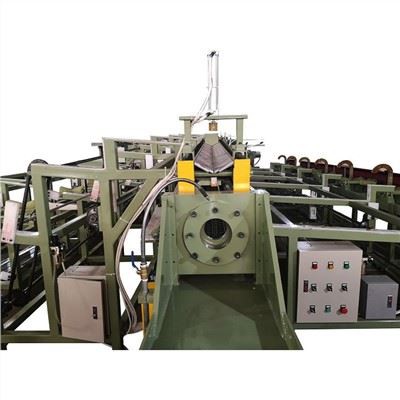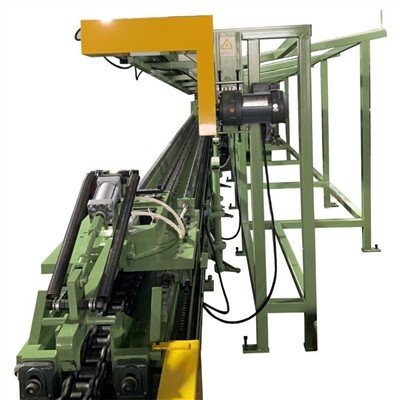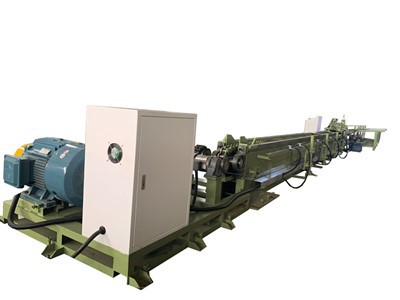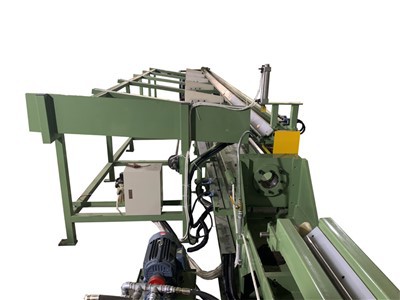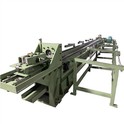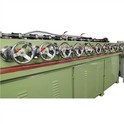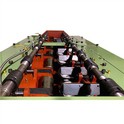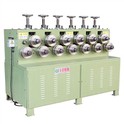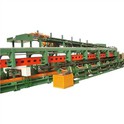Why Choose Us?
Rich Experience
"FANGRONG" brand established in 1998, we are the leader of straightening machine, drawing machine, and pointing machine in China.
Wide Range of Applications
We have rich experiences in aluminum industry, copper industry, stainless steel industry, titanium alloy industry, magnesium alloy industry, molybdenum alloy industry, lead alloy industry, set.
Reliable Product Quality
Our company has been providing customers with better quality products. Our business is always customer-oriented and focuses on creating customer service experience.
Excellent Customer Service
Our goal is to make professional first-class equipment, first-class service and first-class innovation, and realize product specialization, technology specialization, service specialization and teamwork.
What is Drawing Machine?
A wire drawing machine is a versatile and essential tool used in the manufacturing industry for producing precision metal parts. The basic principle behind a wire drawing machine is to apply mechanical force to a metal wire to stretch or flatten it into a specific cross-sectional shape. The machine consists of a series of rollers, guides, and tensioners that work together to achieve the desired result.
Benefits of Drawing Machines in Wire Manufacturing Processes
Enhanced Tensile Strength
Drawing machines are an essential tool for wire manufacturers as they enhance the tensile strength of wires. These machines achieve this by reducing the cross-sectional area of the wire, resulting in a more durable and robust final product. By subjecting the wire to controlled deformation through a line of dies, the machine gradually reduces its diameter while simultaneously increasing its strength. The output of these machines is improved thanks to the use of inverters.
Improved Surface Finish
One of the significant advantages offered by drawing machines is their ability to improve the surface finish and output of wires. During the manufacturing process, impurities such as dirt, rust, or scale can accumulate on the surface of the wire, affecting its appearance, performance, and reliability. However, when passed through a drawing machine, these impurities are effectively removed, resulting in smoother and cleaner wires with an enhanced aesthetic appeal and disconnection from any contaminants.
Customizable Wire Diameter
Wire manufacturers often face varying requirements for different applications. This is where drawing machines, equipped with inverter technology, prove to be invaluable as they allow for easy customization of wire diameter according to specific needs. Manufacturers can simply adjust various parameters within the machine, such as the output and disconnection settings, to achieve their desired outcome. Whether it’s producing thin wires for delicate electronics or thick cables for industrial applications, these machines offer flexibility and versatility in adjusting product details.
Increased Productivity
In today’s fast-paced world, efficiency and productivity are paramount in any manufacturing process. drawing machines contribute significantly to increased productivity by automating what was once a labor-intensive task. With these machines handling most aspects of wire production automatically, manufacturers can achieve higher production rates while minimizing human error and fatigue. The output result is a more efficient operation that meets market demand effectively. These efforts are made possible through the use of an inverter, which ensures smooth operation and prevents disconnection.
Tube Drawing Machine
The Tube Draw Bench Machine offers a number of advanced features that make it an ideal solution for businesses looking to manufacture tubes. One of the key features of this machine is its ability to produce tubes with a high degree of precision. This is achieved through the use of advanced technology that ensures the tube is drawn to the exact specifications required. Another key feature of the Tube Draw Bench Machine is its speed. This machine is capable of producing tubes at a much faster rate than other manufacturing methods, making it an ideal solution for businesses that need to produce large quantities of tubes quickly. This can help businesses save time and reduce production costs, as the machine can produce a large number of tubes in a short period of time.
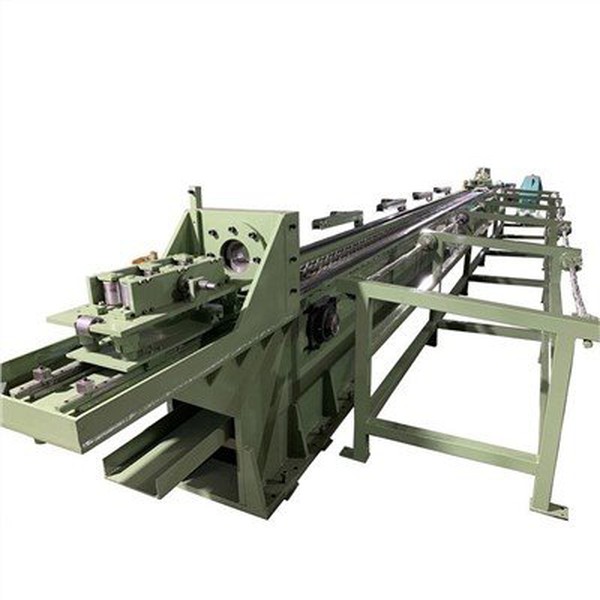
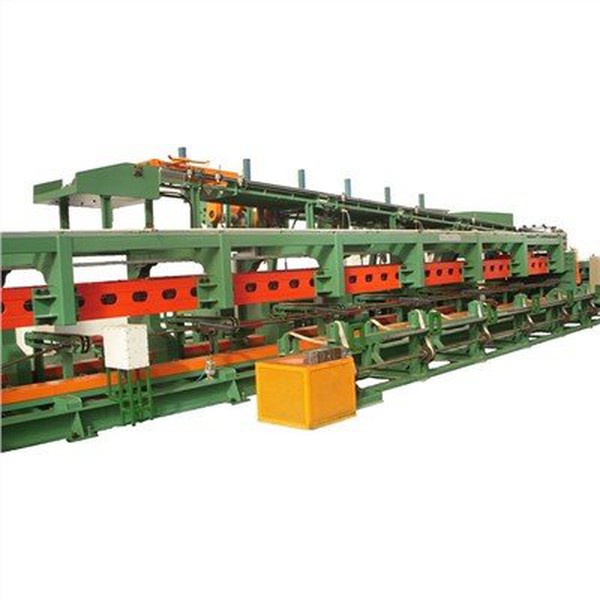
Bar Drawing Machine
The Bright Bar Drawing Machine is a state-of-the-art piece of equipment designed to meet the demands of modern-day manufacturing. As a manufacturer based in China, we have designed this machine to help our customers in various countries outside of China to improve their productivity and efficiency in the metalworking industry. The machine guarantees the highest quality finish of bright bar materials, simplifying the manufacturing process while also reducing production costs. Precision is everything in the metalworking industry. The Bright Bar Drawing Machine is designed to achieve the highest levels of precision, measured to ultra-tight tolerances. Testing shows that the customer obtains precise dimensions after the 3rd pass, contributing to improved accuracy that transcends cut-throat competition.
● Wire reel: It is used to place the original wire coil. The wire is unwound from the reel and fed into the machine.
● Wire drawing die: The die is a tool with a hole through which the diameter of the wire is reduced. The mold is usually made of tungsten carbide.
● Capstan: The capstan is a rotating drum that helps feed and pull the wire through the die. It provides drawing force and speed control for the drawing process.
● Drawing die box: It is a device for placing wire drawing powder and drawing dies.
● Wire drawing lubricants: The wire passes through wire drawing powder before entering the drawing die to reduce the friction between the wire and the die.
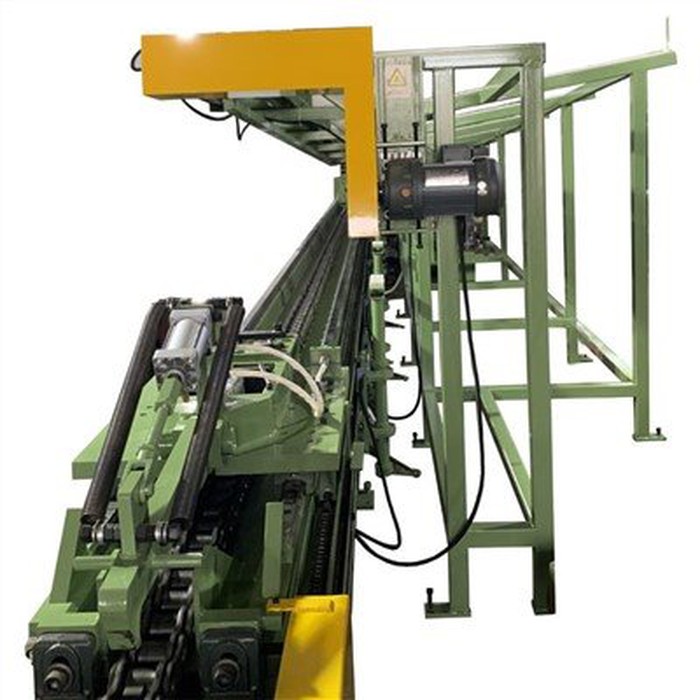
How Does a Drawing Machine Work?
Wire preparation
The first step in using a wire drawing machine is to prepare the wire by removing any burrs, kinks, or imperfections. This is done using a wire brush or other suitable tools to ensure that the wire is straight and free of defects before feeding it into the machine.
Wire feeding
The wire is then fed into the machine through a chute or hopper. The feeder mechanism varies depending on the type of machine being used, but most involve the use of a screw or gear system to control the speed and direction of the wire as it moves through the machine.
Roller assembly
Once the wire has been fed into the machine, it passes through a set of rollers that guide it along its path. The rollers come in different shapes and sizes, depending on the desired cross-sectional shape of the finished part. For example, if you want to produce a flat sheet of metal, you would use rollers with larger diameters to provide more surface area and reduce thickness. If you want to produce a round or oval part, you would use rollers with smaller diameters to create the desired shape.
Tensioning
As the wire passes through the rollers, it is pulled tighter and stretched longer by the tensioners mounted on the machine. This helps to maintain consistent tension throughout the length of the wire, which is critical for achieving accurate and consistent results.
Cutting
Once the desired cross-sectional shape has been achieved, the wire is cut using specialized cutting tools such as scissors or knives. These tools are mounted on rotating axes that allow them to move along the length of the wire, making precise cuts as needed.
Cooling and Finishing
After cutting, the finished part is typically cooled to remove any residual stresses or distortions caused by heat during cutting. This is followed by any necessary finishing operations such as grinding, polishing, or painting to prepare the part for further processing or assembly.
Several Different Types of Wire Drawing Processes for Wire Drawing Machines
Cold rolling
This process involves stretching a metal wire while it is still hot from the rolling mill. The resulting cross-sectional shape is relatively soft and can be easily shaped by hand or other shaping tools. Cold rolling is commonly used for producing thin sheet metal products such as aluminum foil, copper-clad plates, and electrical wiring.
Annealing
Annealing is a process that involves heating a metal wire to a high temperature and then quickly cooling it down again. This process causes the metal to soften and become more malleable, which makes it easier to shape and form. Annealing is commonly used for producing springs, rods, and other components that require high strength and flexibility.
Hardening
Hardening is a process that involves heating a metal wire to a high temperature in order to increase its strength and toughness. This process is commonly used for producing components that require high wear resistance and durability, such as bearing races and gear teeth.
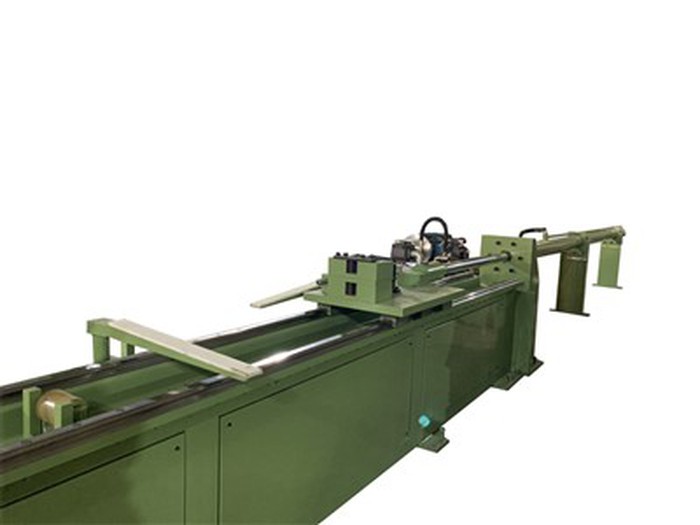
Wire Pay-off
For the wire pay-off, there is no high precision required to control the entire wire drawing machine. For most wire drawing machines, the pay-off operation is realized by the frequency converter driving the pay-off frame, but there are also some double frequency conversion controls. For wire drawing machinery, the rolling mill manufacturer directly feeds the wire into the wire drawing machine through wire tension drafting in the wire drawing link to achieve free wire release.
Wire drawing
The wire drawing link is the most important work link of the wire drawing machine. With different metal materials, different silk varieties and requirements, the drawing process is very different.
Wire Take-up
The operating speed of the take-up link determines the production efficiency of the entire wire drawing machine, and it is also the most challenging part of the whole system to control. In the winding part, the commonly used control technology includes synchronous control and tension control to realize the winding of metal products.
When drawing equipment is used for wire drawing production, one of the factors is important, which may affect the final quality of the wire. This factor is temperature. Moreover, in general, in order to ensure the quality of the drawing machine, we will need to have certain requirements for its heat balance. So how do you guarantee the overall heat balance?
For this problem, if we want to solve it well, we need to consider it in three different ways. Specifically, if you want to properly grasp the heat balance of the wire drawing machine equipment, then we can take measures such as: heat insulation source, constant temperature control and cooling treatment. For the sake of understanding, we will discuss these three aspects below.
As for the first measure, the so-called heat-insulating source actually means that when the wire drawing machine is working, pay attention to protecting its different systems. For example, the electric control box, the static and dynamic pressure spindle hydraulic station, and the female screw support cylinder hydraulic pressure should be Stations and the like are independently arranged outside the mainframe to reduce the potential impact, so as to better maintain the thermal balance of the whole machine.
The second method is called thermostatic control, which is an ideal way to provide a thermostatic control box for different parts of the wire drawing machine so that it can work close to constant temperature.
The last measure is cooling. This link has an important impact on the quality of the wire. We recommend that when using the wire drawing machine, if you want to achieve the thermal balance of the whole machine, it is best to use shower cooling, so that the temperature can be better evenly.
The above three different methods can be said that, to some extent, the heat balance of the wire drawing machine device can be improved, so that the wire drawing machine device is basically in a state of temperature equilibrium, in such a state, It will be able to achieve a more ideal working effect, which is conducive to the smooth progress of the drawing work.
Tend Tube Drawing Machine: Why It Matters
The importance of the tending tube drawing machine skill cannot be overstated. In various occupations and industries, such as automotive manufacturing, construction, and aerospace engineering, tube drawing plays a critical role in creating high-quality products. Professionals who have mastered this skill are highly sought after and can enjoy enhanced career growth and success.
By mastering the skill of tending tube drawing machines, individuals can contribute to the development of innovative products and technologies. They become proficient in ensuring precise dimensions, smooth finishes, and accurate tolerances in tubes, thereby improving overall product quality. This skill also enables professionals to optimize production processes, reduce material waste, and enhance operational efficiency.
The practical application of the tending tube drawing machine skill spans across various industries and careers. For example, in automotive manufacturing, skilled operators use tube drawing machines to produce fuel lines, brake lines, and exhaust pipes with precise dimensions and durability. In the construction industry, this skill is utilized to create structural components like scaffolding poles and pipes. Aerospace engineers rely on tube drawing machines to manufacture intricate parts for aircraft systems.
Causes and Countermeasures of Drawing Machine Breakage
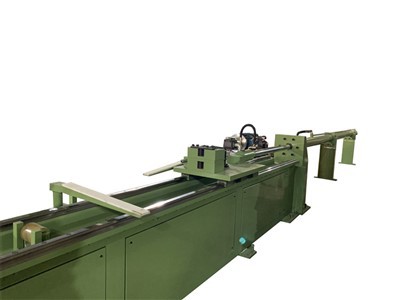
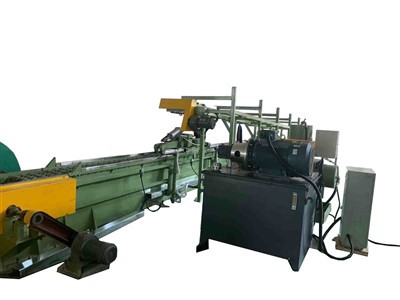
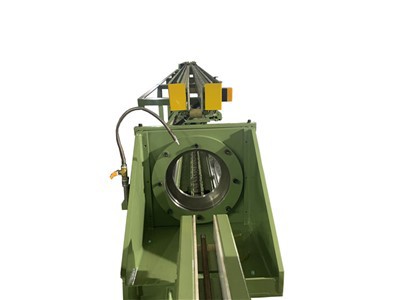
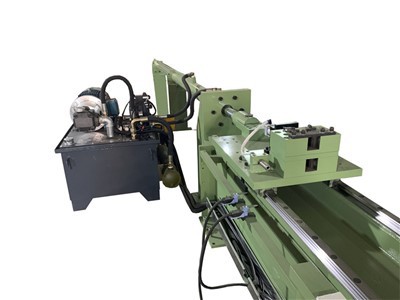
Users in the dust wire-drawing machine equipment, it is inevitable to encounter problems such as broken wire. There are many reasons for this problem. In order to help you better solve this problem, today we will analyze the reasons for you, and will give some Suggestions. Let's take a look at the details.
The first reason is that the joint is not strong. If this is the case, then we should timely adjust the parameter Settings of the welding machine's current, top pressure and power on time, so as to improve the welding quality. The second reason is due to the use of wire contains some inclusions, resulting in the wire drawing machine equipment by the situation of fracture. If this is the case, then we should strengthen the acceptance management of the production blank.
The third reason is the selection of the mold does not meet the requirements. For this problem, we should timely re-selection, combined with the actual process requirements, appropriate adjustment of the requirements of the mold, so as to eliminate the deformation is too large or too small phenomenon.
The fourth reason is that the counterforce is too large. Under normal circumstances, wire drawing machine equipment tension should be controlled in a certain range, and the number of tower wheel winding to be reasonable.
The fifth reason is due to the choice of mold hole shape is not reasonable, or smoothness does not meet the requirements. Therefore, we must strictly comply with the standard repair line mold, workspace deformation Angle should ensure that the use of requirements, wire drawing machine line mold diameter area can not be too long, after polishing the mold hole finish to meet the requirements. The sixth reason is that pickling is not thorough. At this time, we should readjust the acid temperature, concentration, strengthen washing and neutralization.
How Is the Working Efficiency of the Drawing Machine Guaranteed?
In order to make it easier for everyone to understand this content, it is necessary to first understand the control system of the device. In fact, for the wire drawing machine, if we need to further improve its working efficiency, then we must meet the control of its speed. Only by meeting such requirements can we provide a very accurate and reasonable speed for our production work, while at the same time ensuring the quality of its production.
This is because in the entire production process, this part of the operation requirements are relatively high, and more complicated. It not only requires the cooperative cooperation of the various components of the wire drawing machine, but also needs to ensure that different outlet speeds can be flexibly regulated. Therefore, we have selected four servo motors to control at the same time, so that we can meet the exchange requirements between different data.
Therefore, in the actual work, for the operators, we need to pay attention to the different work needs should be treated separately. We need to choose the appropriate wire drawing machine according to different outlet specifications. Only in this way can we meet the requirements of production quality while ensuring its speed. Otherwise, if the selected equipment does not match, it will cause no. Necessary trouble.
Our Factory
Dongguan Fangrong Precision Machinery Industry Co., Ltd., established in 1999, is a professional manufacturer of wire drawing machines, straightening machines, wire rolling machines and other equipment. The company is a professional manufacturer integrating development, production and sales, Our goal is to make professional first-class equipment, first-class service and first-class innovation, and realize product specialization, technology specialization, service specialization and teamwork.
Ultimate FAQ Guide to Drawing Machine
We're well-known as one of the leading drawing machine manufacturers and suppliers in China. Please rest assured to buy discount drawing machine for sale here and get quotation from our factory. For customized service, contact us now.
3004 aluminum, aluminium composite pipe, 9mm aluminium tube
